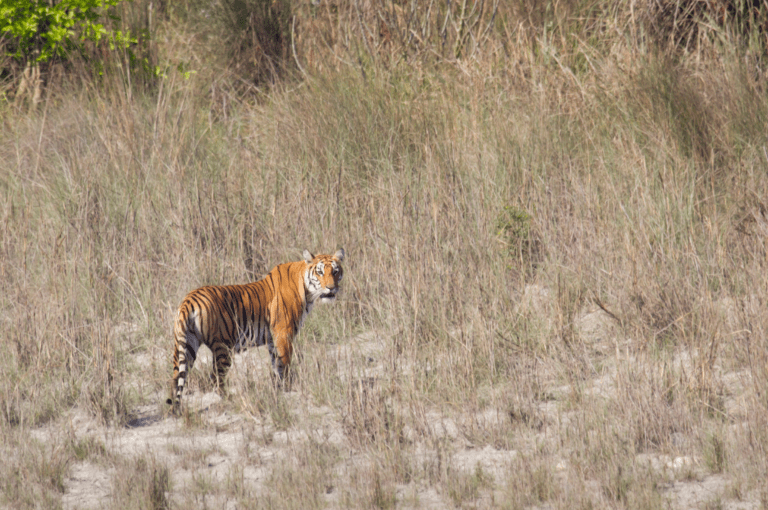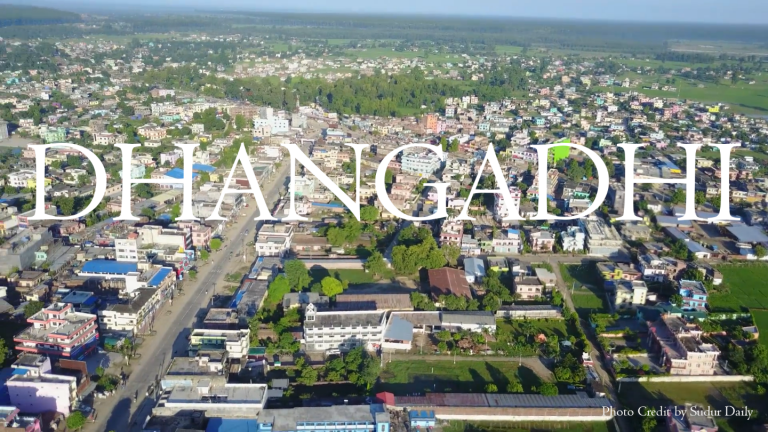Nestled in the heart of the Himalayas, Nepal is a land of breathtaking natural beauty, rich cultural heritage, and warm hospitality. Whether you’re an adventure seeker, a cultural enthusiast, or someone looking for tranquillity, Nepal has something to offer. Here are ten compelling reasons to add Nepal to your travel bucket list.
1. The Majestic Himalayas
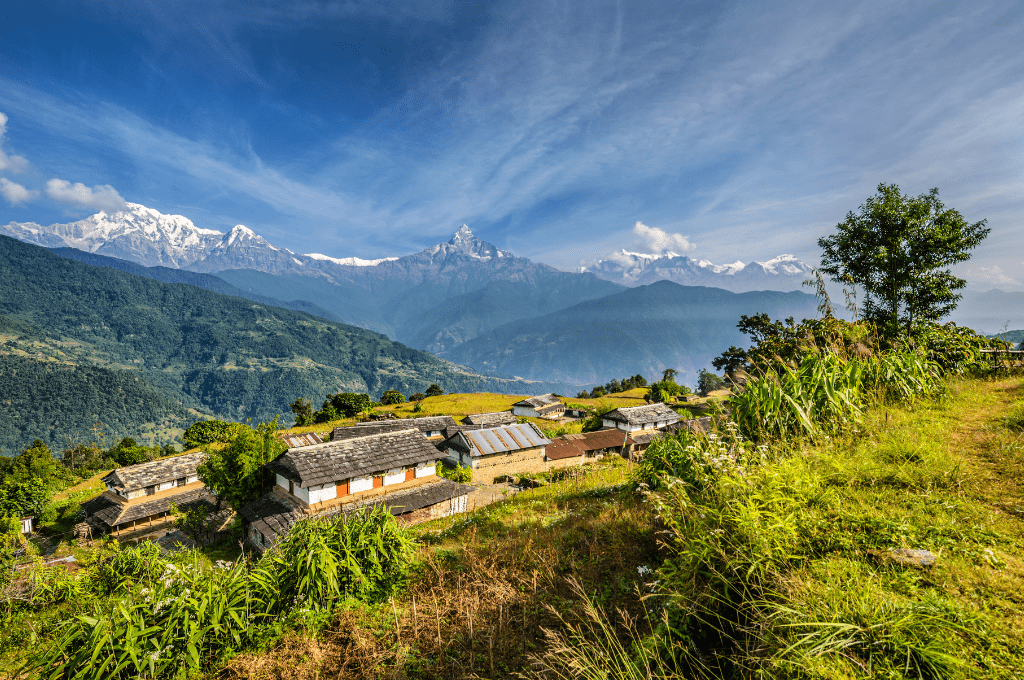
When you think of Nepal, the first image that often comes to mind is the towering peaks of the Himalayas. Home to eight of the world’s fourteen highest mountains, including the iconic Mount Everest, Nepal is truly a trekker’s paradise. The Himalayas offer unparalleled trekking opportunities, catering to both novice hikers and seasoned mountaineers.
Everest Base Camp Trek
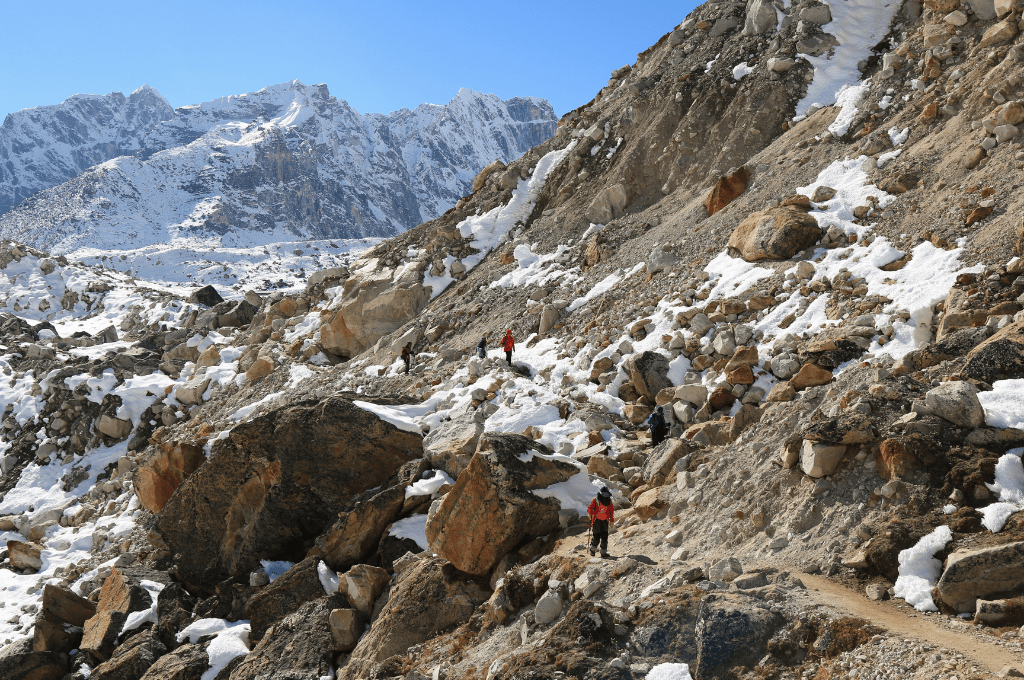
The Everest Base Camp (EBC) trek is one of the most popular and iconic treks in the world. It offers a chance to walk in the footsteps of legendary mountaineers and to experience the unique Sherpa culture. The trek takes you through picturesque villages, lush forests, and high-altitude landscapes. Standing at the base of the world’s highest peak, surrounded by the towering giants of the Himalayas, is an awe-inspiring experience.
Annapurna Circuit
The Annapurna Circuit is another classic trek that offers diverse landscapes, from subtropical forests to alpine meadows and arid deserts. The highlight of this trek is crossing the Thorong La Pass at an altitude of 5,416 meters. The circuit also takes you through the beautiful Annapurna Conservation Area, home to diverse flora and fauna.
Langtang Valley Trek
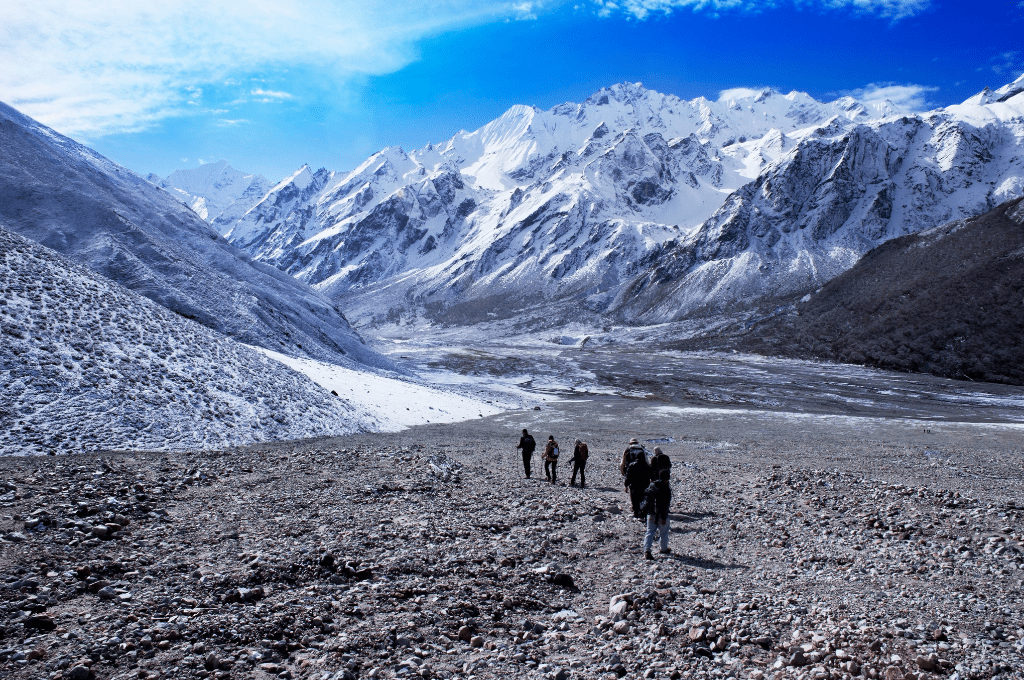
For those seeking a less crowded and more tranquil trekking experience, the Langtang Valley trek is an excellent choice. Located close to Kathmandu, the trek offers stunning views of the Langtang Himal range, picturesque valleys, and traditional Tamang villages. The region is also known for its rich biodiversity and the sacred Gosaikunda Lake.
Poon Hill Trek
The Poon Hill trek is a shorter and easier trek that offers panoramic views of the Annapurna and Dhaulagiri mountain ranges. The highlight of this trek is the sunrise view from Poon Hill, where the mountains are bathed in golden hues. This trek is ideal for those with limited time or for those who prefer a less strenuous trek.
2. Rich Cultural Heritage
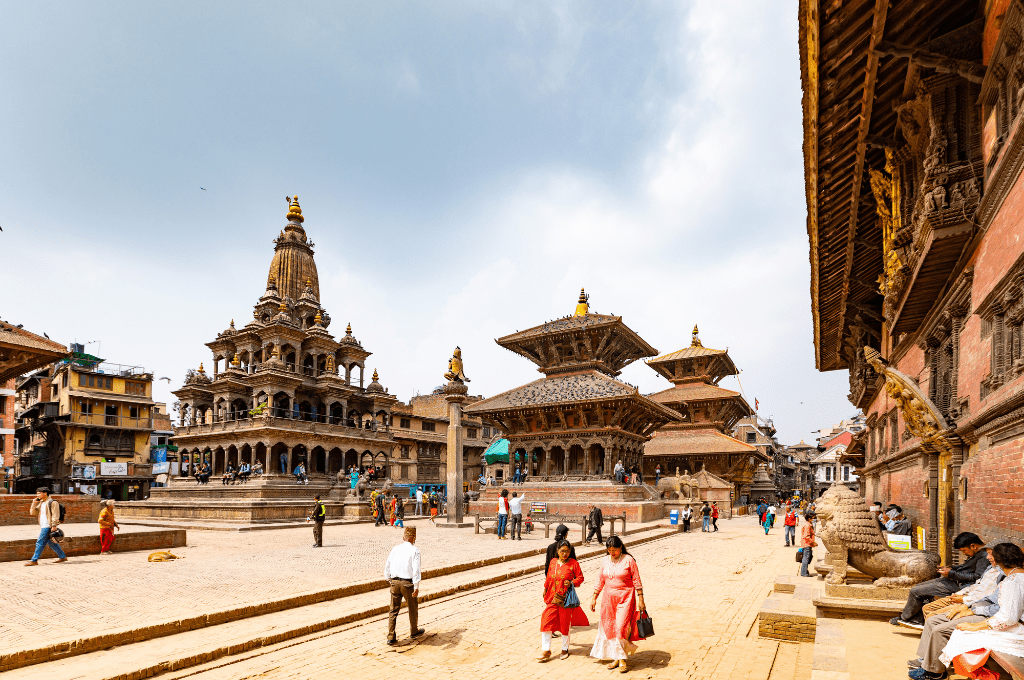
Nepal boasts a rich tapestry of cultures, traditions, and festivals, reflecting its diverse ethnic mosaic. The Kathmandu Valley alone has seven UNESCO World Heritage Sites, each offering a glimpse into the country’s history and heritage.
Kathmandu Durbar Square

Kathmandu Durbar Square, located in the heart of the capital city, is a stunning collection of palaces, courtyards, and temples. The square is a living museum, showcasing exquisite Newari architecture and craftsmanship. The Kumari Ghar, home to the living goddess Kumari, is a unique attraction where visitors can witness centuries-old traditions.
Bhaktapur Durbar Square
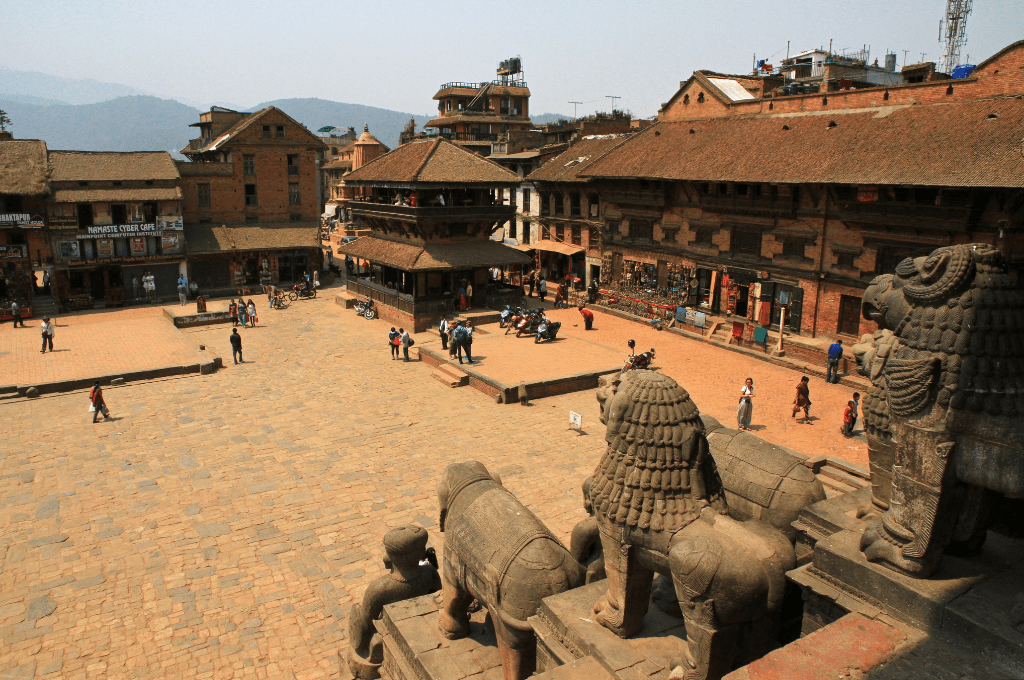
Bhaktapur, also known as the “City of Devotees,” is a well-preserved medieval city that transports visitors back in time. Bhaktapur Durbar Square is a UNESCO World Heritage Site famous for its intricately carved temples, royal palace, and traditional Newari houses. The city’s narrow alleys, bustling squares, and vibrant festivals offer an authentic cultural experience.
Patan Durbar Square
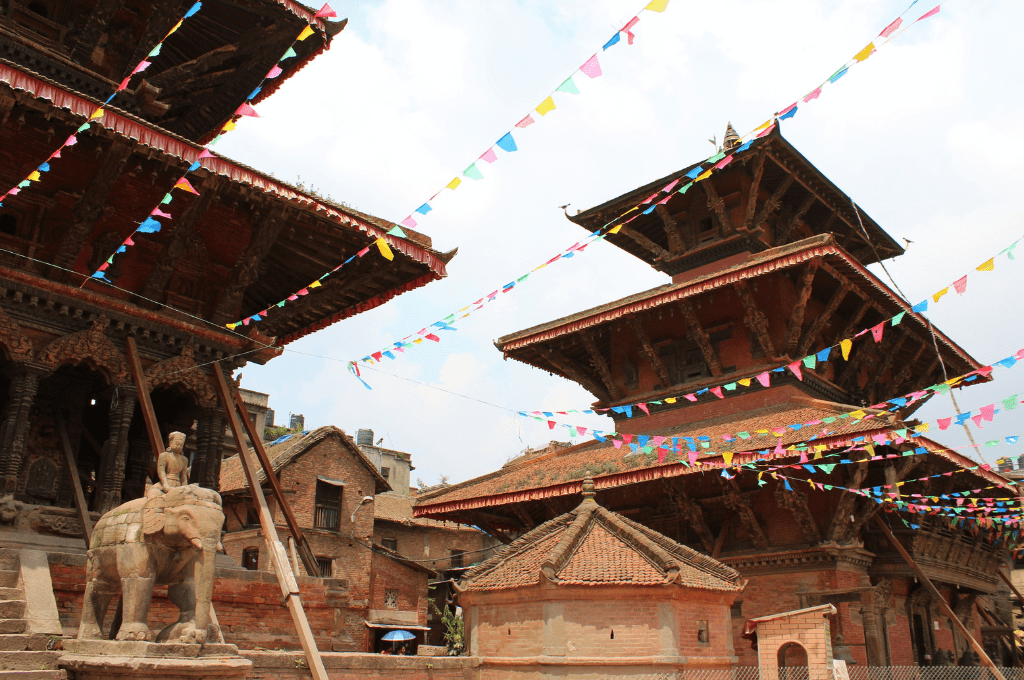
Patan, also known as Lalitpur, is another ancient city renowned for its artistic heritage. Patan Durbar Square is a UNESCO World Heritage Site that features stunning temples, courtyards, and the famous Krishna Mandir. The city’s rich cultural traditions are evident in its festivals, art, and craftsmanship.
Swayambhunath Stupa (Monkey Temple)
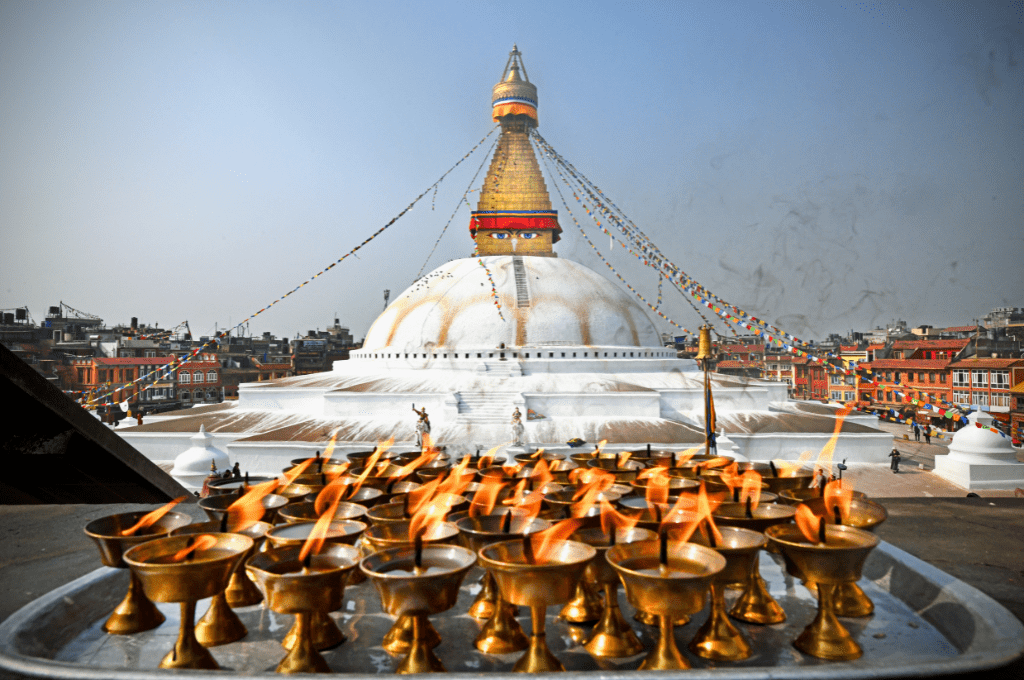
Swayambhunath, also known as the Monkey Temple, is an ancient stupa perched on a hilltop overlooking Kathmandu. The stupa is a UNESCO World Heritage Site and one of the most sacred Buddhist sites in Nepal. The site offers panoramic views of the Kathmandu Valley and is a symbol of religious harmony, with both Hindu and Buddhist shrines.
Boudhanath Stupa
Boudhanath Stupa is one of the largest stupas in the world and a major pilgrimage site for Buddhists. The stupa’s massive mandala and the eyes of Buddha gazing in all four directions create a serene and spiritual atmosphere. The surrounding area is home to numerous monasteries and Tibetan shops, adding to the cultural richness.
Pashupatinath Temple

Pashupatinath Temple is the most sacred Hindu temple in Nepal, dedicated to Lord Shiva. Located on the banks of the Bagmati River, the temple complex is a UNESCO World Heritage Site and a major pilgrimage site for Hindus. The temple’s pagoda-style architecture, intricate wood carvings, and the rituals performed on the ghats create a deeply spiritual experience. Witnessing the evening aarti (prayer ceremony) by the river is a mesmerizing sight, where the devotion and spirituality of the place come alive.
3. Adventure Activities
Nepal is not just for trekkers; it is an adventure playground offering a variety of thrilling activities that cater to adrenaline junkies from around the world. The country’s diverse landscape provides the perfect backdrop for numerous adventure sports.
White-Water Rafting
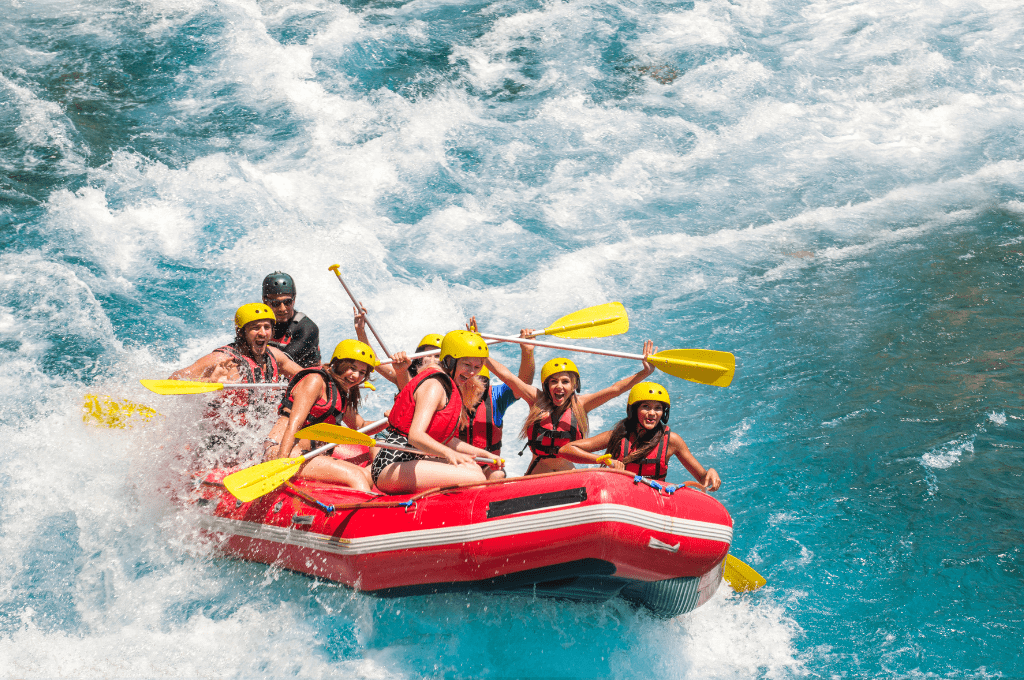
Nepal’s rivers, fed by the glacial waters of the Himalayas, offer some of the best white-water rafting experiences in the world. The Trishuli River, with its moderate rapids, is ideal for beginners and families, while the Bhote Koshi River, known for its intense and challenging rapids, attracts experienced rafters. Rafting through Nepal’s rivers is not only an adventure but also a way to witness the stunning natural beauty and rural life along the riverbanks.
Paragliding in Pokhara
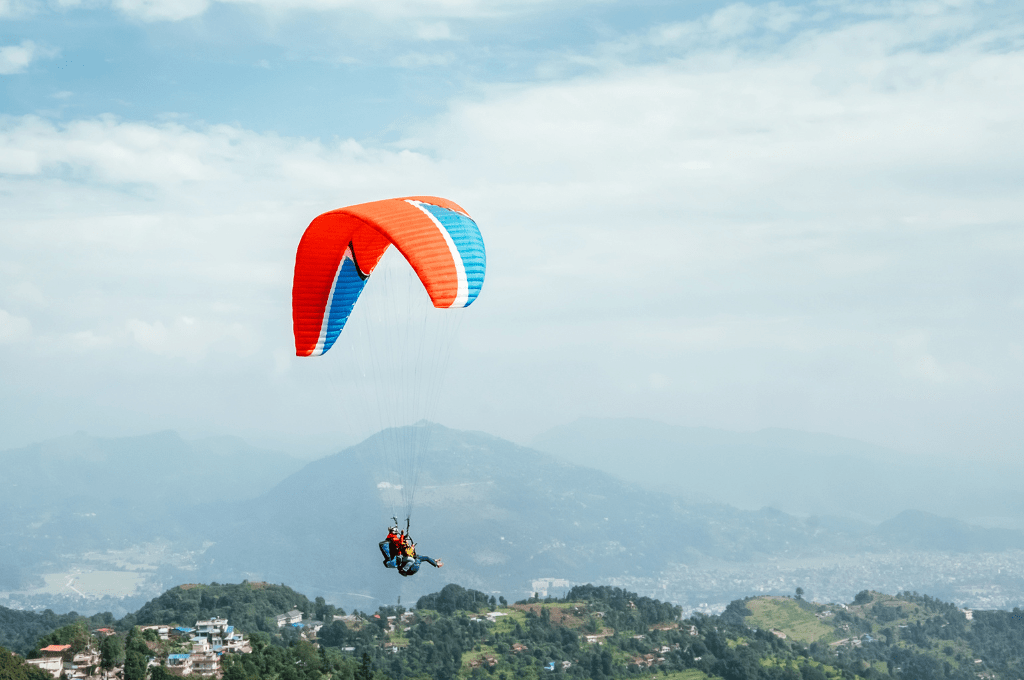
Pokhara, known for its stunning lakes and mountain views, is also a premier paragliding destination. Soaring high above the Phewa Lake with the Annapurna range as a backdrop is an exhilarating experience. Tandem flights with experienced pilots make this adventure accessible even to beginners, offering a bird’s-eye view of one of the most beautiful spots on earth.
Bungee Jumping

For those seeking the ultimate adrenaline rush, bungee jumping in Nepal is a must-try. The Bhote Koshi River offers a 160-meter jump from one of the world’s highest suspension bridges. The free fall towards the river, surrounded by verdant hills and deep gorges, is an unforgettable experience.
Rock Climbing
Nepal’s rugged terrain and natural rock formations provide excellent opportunities for rock climbing. The hills around Kathmandu, particularly in Nagarjun and Hattiban, are popular climbing spots. For more serious climbers, the cliffs of the Annapurna and Langtang regions offer challenging routes with spectacular views.
Mountain Biking

Mountain biking is another fantastic way to explore Nepal’s diverse landscapes. From the rugged trails of the Kathmandu Valley to the challenging circuits around the Annapurna region, there are routes for all levels of cyclists. The trails offer a mix of technical descents, steep climbs, and scenic rides through traditional villages and stunning landscapes.
4. Wildlife and Nature
Nepal’s diverse ecosystems range from tropical jungles to alpine forests, making it a haven for wildlife enthusiasts and nature lovers. The country’s national parks and conservation areas protect a wealth of flora and fauna, offering unique wildlife viewing opportunities.
Chitwan National Park
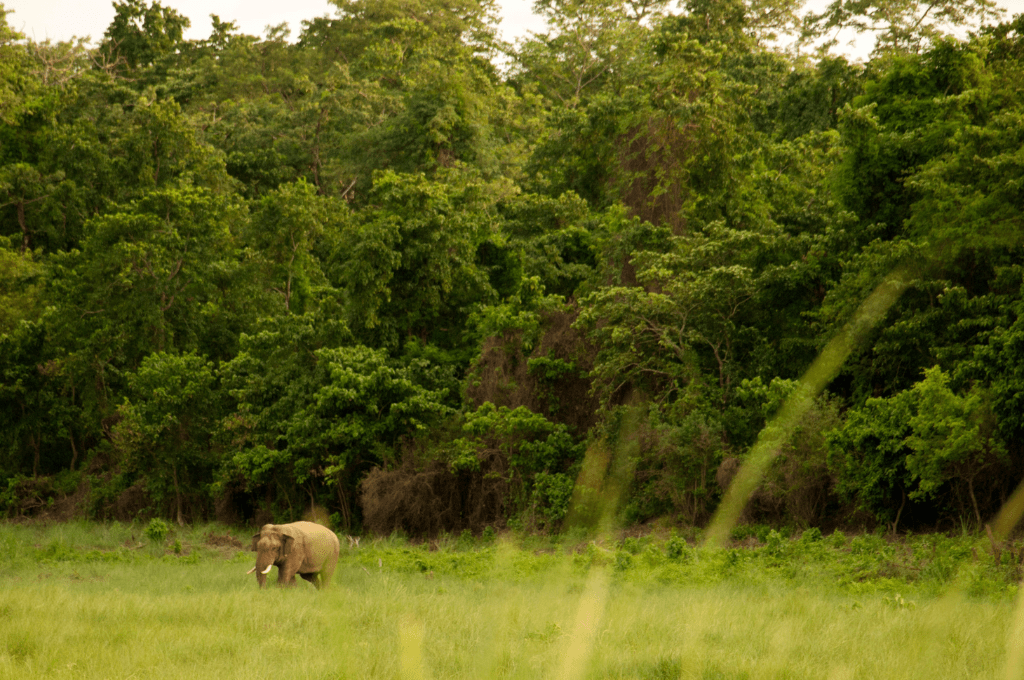
Chitwan National Park, a UNESCO World Heritage Site, is one of the best places in Asia to see wildlife in its natural habitat. The park is home to the endangered one-horned rhinoceros, Bengal tiger, Asian elephant, and numerous bird species. Jungle safaris, either by jeep or on elephant back, provide a chance to spot these magnificent animals.
Bardia National Park
Bardia National Park, located in the remote western part of Nepal, is less frequented by tourists but offers equally rich wildlife experiences. The park is known for its population of Bengal tigers and gharials (a type of crocodile). Bardia’s serene and less crowded environment makes it a perfect spot for nature enthusiasts seeking an off-the-beaten-path adventure.
Sagarmatha National Park
Sagarmatha National Park, home to Mount Everest, is not only a trekking destination but also a biodiversity hotspot. The park’s varied altitudes support a range of vegetation and wildlife, including the elusive snow leopard, red panda, and Himalayan thar. The breathtaking landscapes of towering peaks, deep valleys, and glacial rivers make it a nature lover’s paradise.
Koshi Tappu Wildlife Reserve
For bird watchers, Koshi Tappu Wildlife Reserve is a must-visit. Located in the eastern Terai, the reserve is known for its rich birdlife, with over 500 species recorded. The wetlands and grasslands provide ideal habitats for both resident and migratory birds, making it a significant bird-watching destination in South Asia.
5. Spiritual Journeys
Nepal is a significant spiritual destination for both Hindus and Buddhists. The country’s ancient temples, monasteries, and sacred sites offer a serene escape and an opportunity for spiritual reflection.
Lumbini
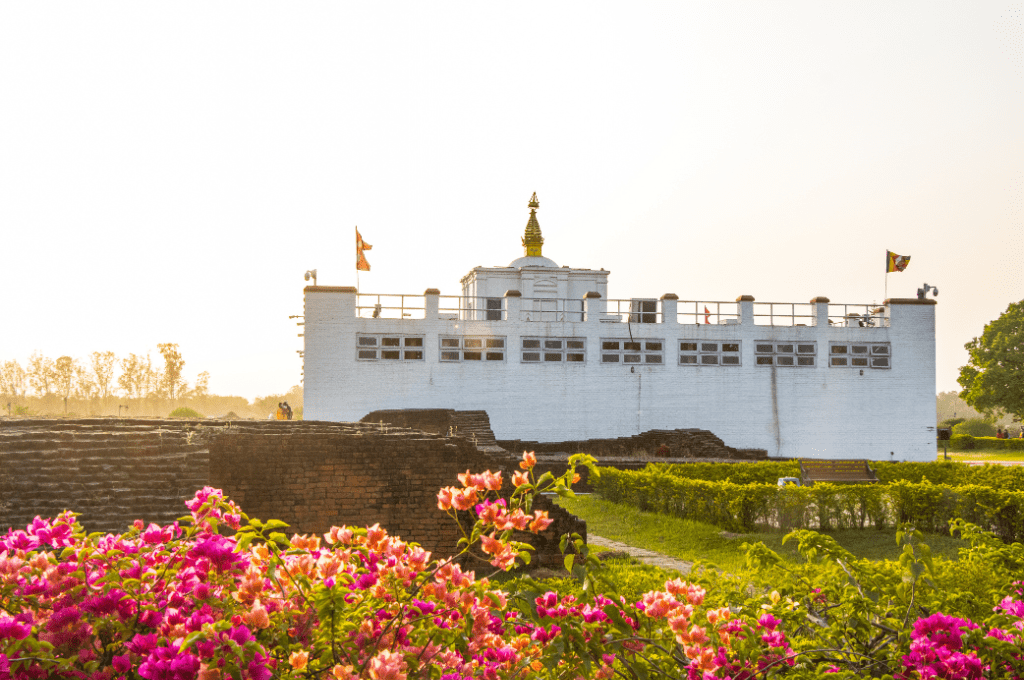
Lumbini, the birthplace of Lord Buddha, is a UNESCO World Heritage Site and a major pilgrimage destination for Buddhists. The site includes the sacred garden, the Maya Devi Temple (marking the exact birthplace of Buddha), and numerous monasteries built by various Buddhist countries. The peaceful ambiance of Lumbini provides a space for meditation and spiritual contemplation.
Muktinath Temple
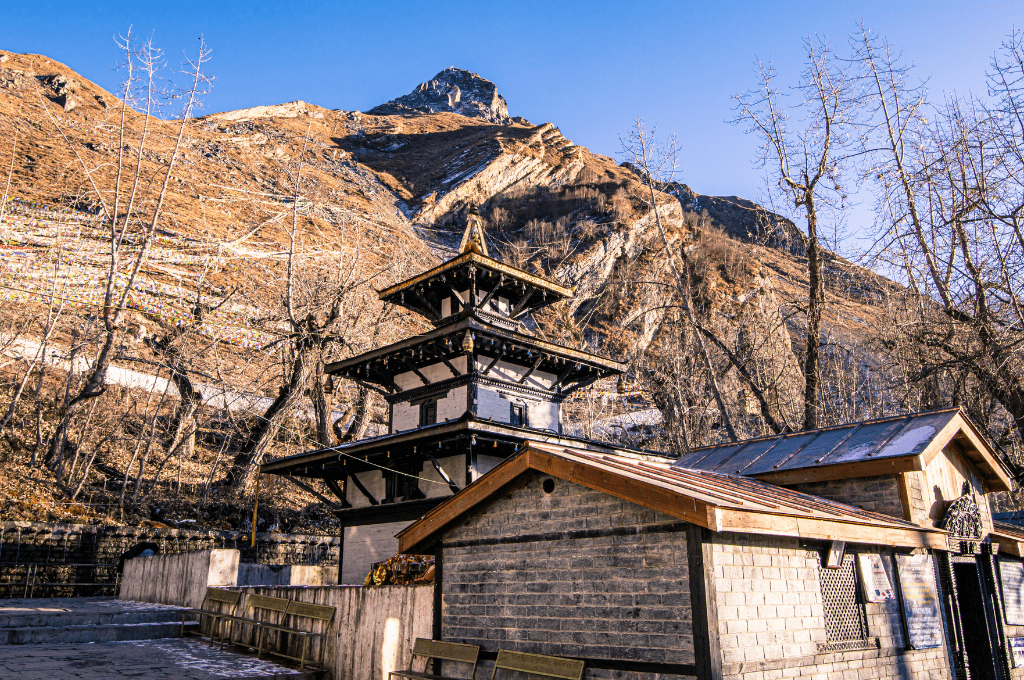
Muktinath Temple, located in the Mustang region, is a sacred site for both Hindus and Buddhists. The temple is situated at an altitude of 3,710 meters and is believed to be a place of liberation or moksha. Pilgrims visit Muktinath to bathe in the 108 waterspouts and dip in the two sacred pools, which are said to cleanse one of all sins. The journey to Muktinath, often combined with the Jomsom trek, is a spiritual adventure set against the stunning backdrop of the Annapurna range.
Kopan Monastery
Kopan Monastery, located on a hilltop near Kathmandu, is a renowned center for Buddhist learning and meditation. The monastery offers various courses and retreats for those interested in learning about Buddhism and practicing meditation. The tranquil setting, combined with panoramic views of the Kathmandu Valley, makes it an ideal place for spiritual rejuvenation.
Janakpur

Janakpur, believed to be the birthplace of Sita, the consort of Lord Rama, is a significant pilgrimage site for Hindus. The Janaki Mandir, an impressive marble temple dedicated to Sita, is the main attraction. The city is also known for its vibrant festivals, particularly the colorful Vivah Panchami festival, which celebrates the marriage of Sita and Rama.
6. Unique Festivals and Traditions
Nepal’s vibrant culture is reflected in its numerous festivals and traditions, which are celebrated with great enthusiasm and joy. These festivals provide a unique insight into the country’s cultural diversity and heritage.
Dashain

Dashain is the longest and most important festival in Nepal, celebrated by both Hindus and Buddhists. The festival, which lasts for 15 days, commemorates the victory of good over evil. Families come together to worship the goddess Durga, exchange blessings, and enjoy feasts. The festival is marked by the flying of kites, the playing of traditional games, and the construction of bamboo swings.
Tihar

Tihar, also known as the Festival of Lights, is a five-day Hindu festival that honors different animals, including crows, dogs, cows, and oxen, as well as the goddess of wealth, Laxmi. The festival is celebrated with the lighting of oil lamps, decorating homes with rangoli (colorful patterns made with rice flour), and the singing of traditional songs. Tihar is a time of joy and togetherness, with families and communities coming together to celebrate.
Holi
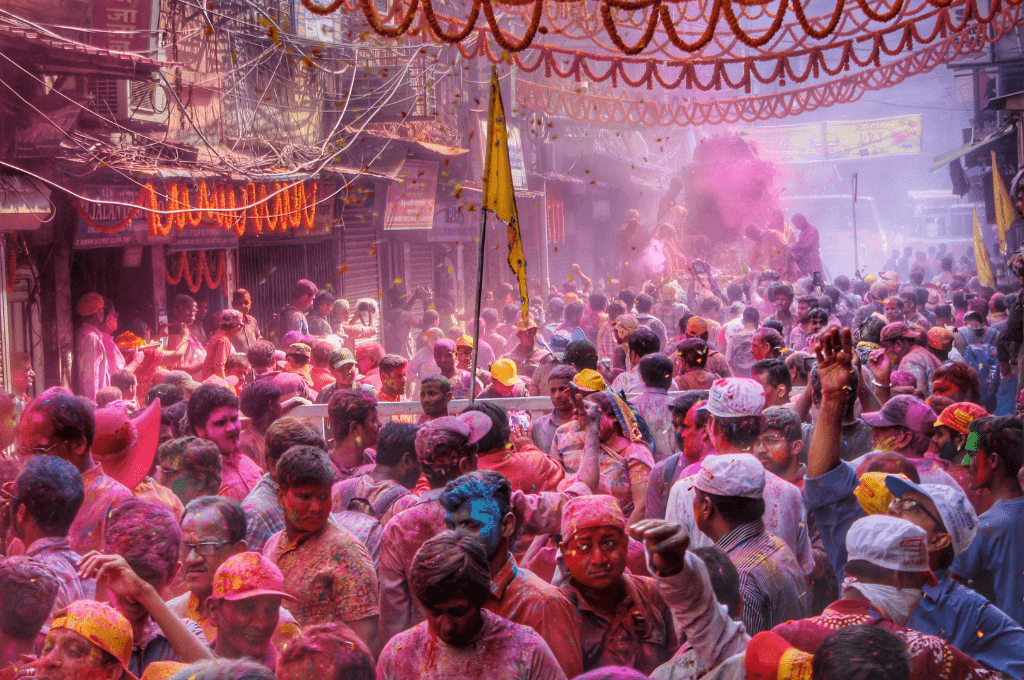
Holi, the festival of colors, is one of the most vibrant and joyous festivals in Nepal. Celebrated in March, Holi marks the arrival of spring and the victory of good over evil. People of all ages participate in the festivities by throwing colored powders and water at each other, dancing, and singing. The festival is a time of unity and fun, breaking down social barriers and bringing people together.
Indra Jatra
Indra Jatra is a significant festival celebrated in Kathmandu, dedicated to Indra, the king of gods and the deity of rain. The festival features various traditional dances, including the Lakhe dance and the procession of the living goddess Kumari. The streets of Kathmandu come alive with music, masked dances, and the construction of a large wooden chariot that is pulled through the city.
Teej
Teej is a festival celebrated by Nepali women in honor of the goddess Parvati and her union with Lord Shiva. Women dress in red sarees, fast, and gather to sing, dance, and pray for marital bliss and the well-being of their husbands. The festival is a vibrant display of Nepali culture and the strength of women’s community bonds.
7. Warm and Hospitable People
Nepal is known for its warm and hospitable people, who welcome visitors with open arms and genuine smiles. The Nepali concept of “Atithi Devo Bhava,” which means “The guest is God,” reflects the country’s deep-rooted tradition of hospitality.
Local Homestays
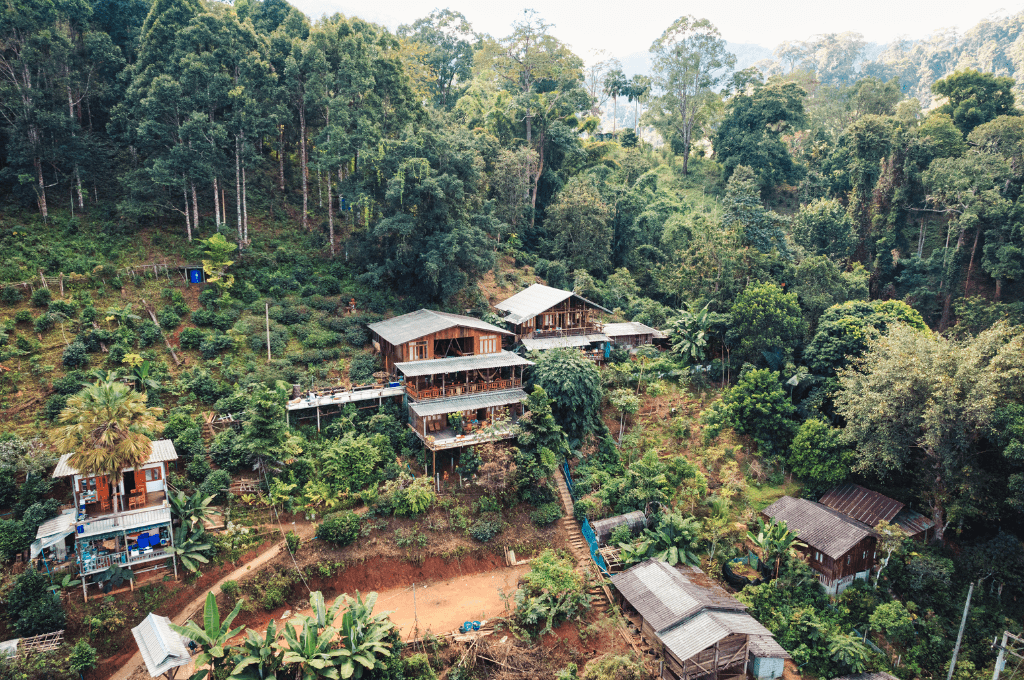
Staying in a local homestay is a fantastic way to experience Nepali hospitality and culture firsthand. Homestays offer a unique opportunity to live with a local family, participate in their daily activities, and enjoy traditional home-cooked meals. This immersive experience provides a deeper understanding of Nepali life and allows for meaningful interactions with locals.
Community-Based Tourism
Community-based tourism initiatives in Nepal aim to promote sustainable tourism that benefits local communities. These initiatives often involve trekking routes that pass through remote villages, where visitors can stay in community-run lodges and learn about local customs and practices. This form of tourism helps preserve cultural heritage and provides economic opportunities for rural communities.
Festivals and Celebrations
Participating in local festivals and celebrations is another way to experience the warmth and hospitality of the Nepali people. Whether it’s joining a family for a Dashain feast, dancing during Tihar, or playing with colors during Holi, these interactions create lasting memories and connections.
8. Delicious Cuisine
Nepalese cuisine is a delightful blend of flavors influenced by its diverse ethnic groups and neighboring countries, particularly India, Tibet, and China. The use of fresh, locally sourced ingredients and traditional cooking methods makes Nepali food a unique and wholesome experience.
Dal Bhat
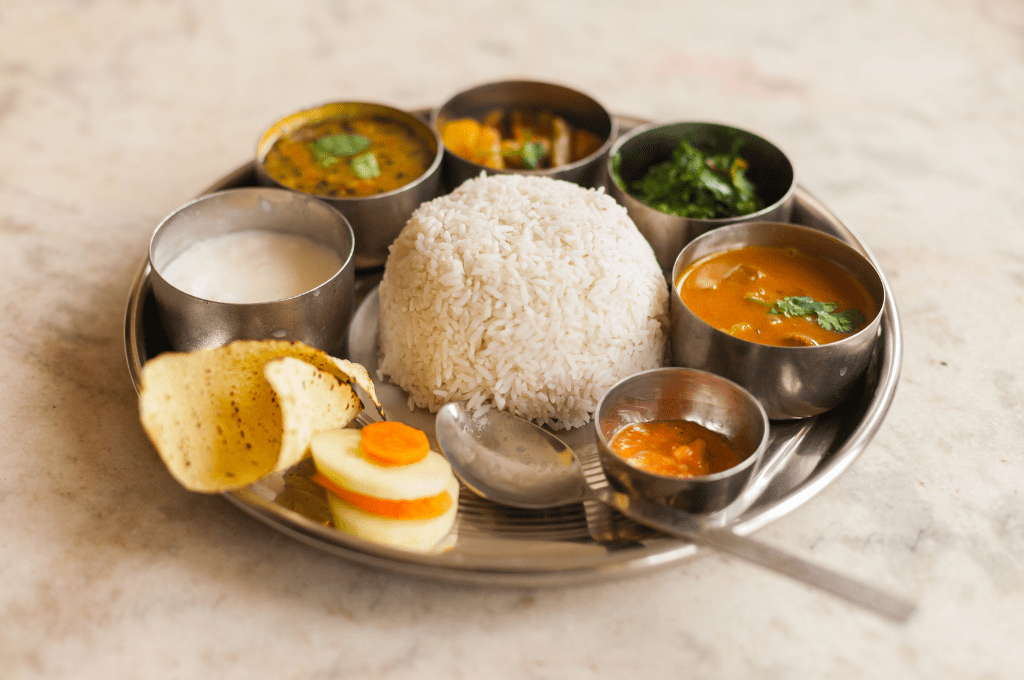
Dal Bhat is the staple meal of Nepal, consisting of steamed rice (bhat) and lentil soup (dal), usually accompanied by seasonal vegetables, pickles, and sometimes meat or fish curry. This hearty and nutritious dish is enjoyed by Nepalis twice a day and is often said to provide the energy needed for their strenuous lifestyles, especially in the hilly and mountainous regions.
Momos
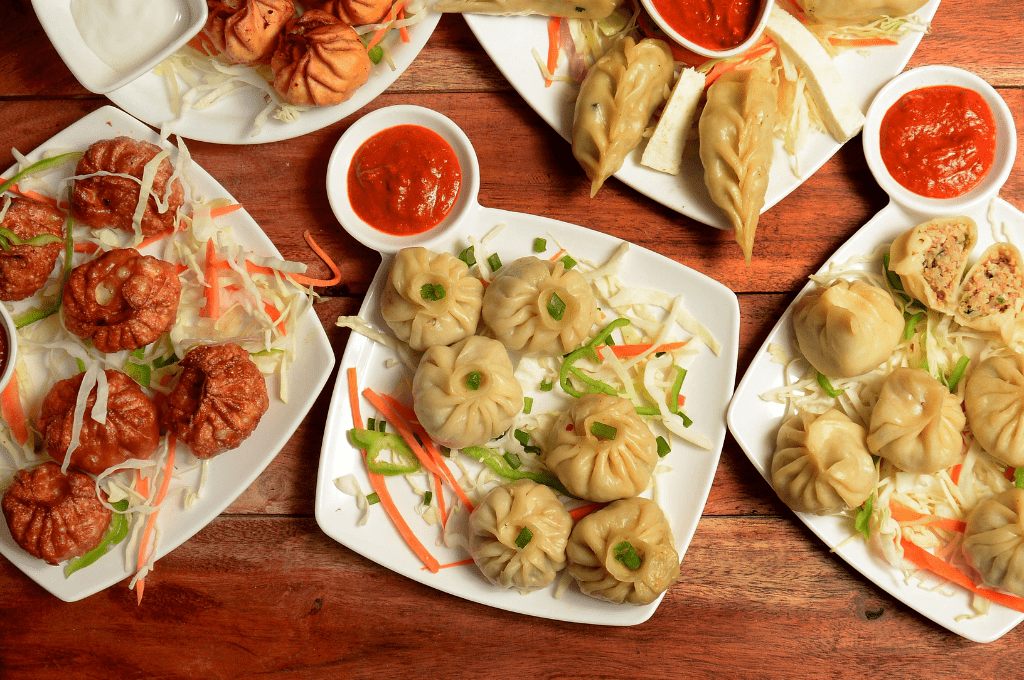
Momos are a popular snack and street food in Nepal. These Tibetan-style dumplings are filled with minced meat (typically chicken, buffalo, or pork) or vegetables and are either steamed or fried. Served with a spicy dipping sauce, momos are a favorite among locals and tourists alike.
Newari Cuisine

The Newar community of the Kathmandu Valley has a rich culinary tradition, offering a variety of unique dishes. Some must-try Newari foods include:
Samay Baji: A traditional Newari set that includes flattened rice, roasted meat, boiled egg, soybeans, and pickles.
Yomari: A sweet steamed dumpling filled with molasses and sesame seeds, typically prepared during the Yomari Punhi festival.
Chhoyla: Spiced grilled meat, often buffalo, marinated with mustard oil, garlic, ginger, and a mix of spices.
Thakali Cuisine
Originating from the Thak Khola region of Mustang, Thakali cuisine is known for its balanced flavors and variety. A typical Thakali meal includes rice, lentil soup, gundruk (fermented leafy greens), meat or vegetable curry, and pickles. The emphasis on fresh and local ingredients makes Thakali food a favorite among Nepalis and visitors.
Sel Roti

Sel Roti is a traditional Nepali rice flour doughnut, often prepared during festivals and special occasions. Crispy on the outside and soft on the inside, sel roti is usually enjoyed with yogurt or spiced potato curry.
Gundruk and Sinki
Gundruk and Sinki are traditional Nepali fermented leafy greens and radish taproots, respectively. These fermented vegetables are rich in probiotics and are often used in soups, pickles, and curries, adding a unique tangy flavor to dishes.
Juju Dhau
Juju Dhau, meaning “king of curds,” is a rich and creamy yogurt from Bhaktapur. Made from buffalo milk, Juju Dhau is thicker and sweeter than regular yogurt and is often served as a dessert or offered during religious ceremonies.
9. Arts and Crafts
Nepal has a rich tradition of arts and crafts, reflecting its cultural diversity and historical heritage. The skills and techniques used in Nepali handicrafts have been passed down through generations, making each piece a unique work of art.
Thangka Paintings
Thangka paintings are intricate Buddhist artworks created on cotton or silk. These paintings typically depict deities, mandalas, and scenes from the life of Buddha. Thangkas are used as teaching tools and for meditation, with each piece meticulously crafted to convey spiritual significance.
Handwoven Textiles
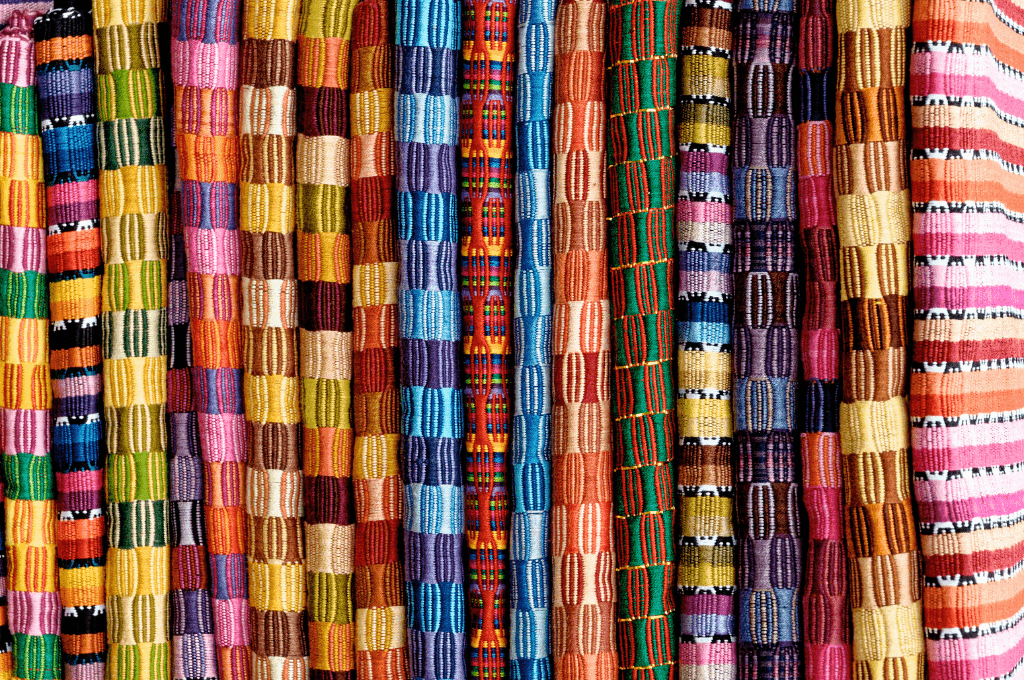
Nepal is renowned for its handwoven textiles, including pashmina shawls, Dhaka fabric, and traditional weaving from various ethnic groups. Pashmina, made from the fine wool of Himalayan goats, is highly prized for its softness and warmth. Dhaka fabric, characterized by its colorful geometric patterns, is commonly used to make traditional clothing such as the topi (Nepali cap) and shawls.
Wood Carvings

The Newar artisans of the Kathmandu Valley are famous for their exquisite wood carvings. Intricately carved windows, doors, and pillars adorn many traditional buildings and temples in the region. These carvings often feature religious motifs, mythological figures, and floral patterns.
Metalwork
Nepalese metalwork, particularly in creating statues and religious artifacts, is highly regarded. Craftsmen use traditional techniques to create detailed bronze and copper statues of deities, as well as ritual objects like butter lamps, bells, and singing bowls.
Pottery
Pottery is another important craft in Nepal, with the ancient town of Bhaktapur being a notable center for traditional pottery. The potters of Bhaktapur produce a variety of earthenware items, including water jars, cooking pots, and decorative pieces.
10. Sustainable and Responsible Tourism
As tourism continues to grow in Nepal, there is an increasing emphasis on sustainable and responsible practices. Efforts are being made to minimize the environmental impact of tourism and ensure that local communities benefit from it.
Eco-Trekking
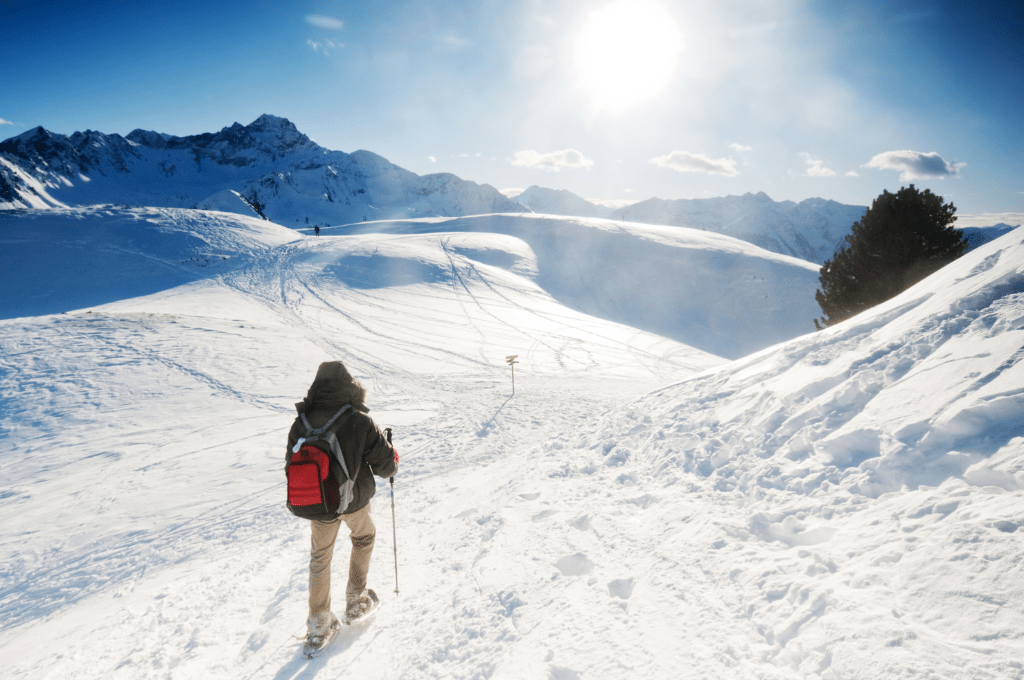
Eco-trekking initiatives focus on minimizing the environmental footprint of trekking activities. This includes promoting responsible waste management, using eco-friendly accommodations, and supporting local conservation efforts. Many trekking companies offer eco-treks that emphasize Leave No Trace principles, ensuring that the pristine environments of the Himalayas are preserved for future generations.
Community-Based Tourism
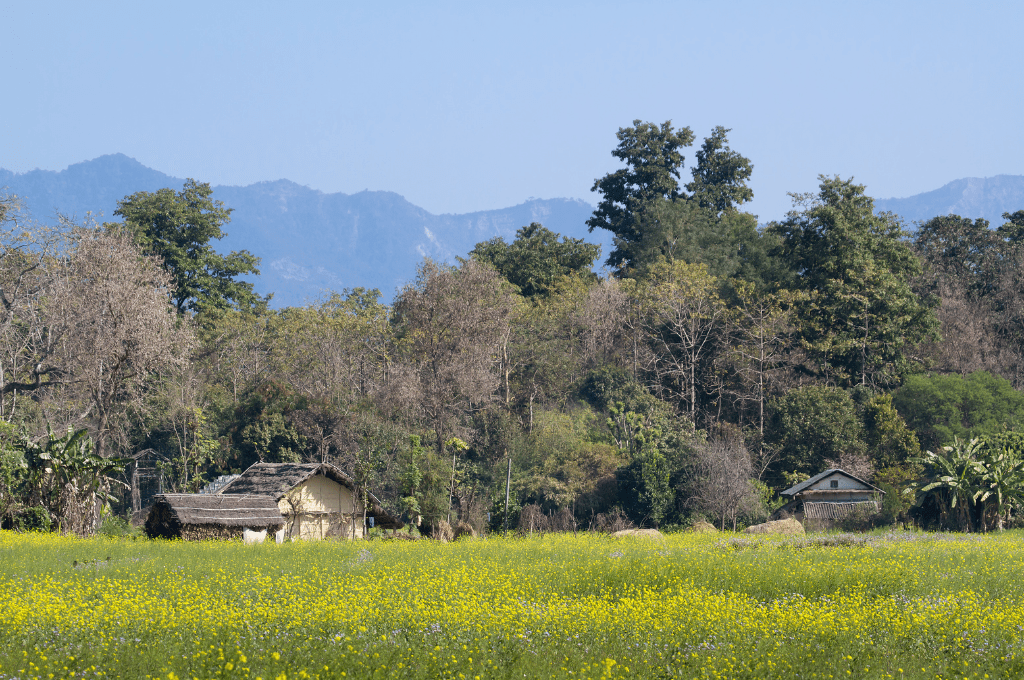
Community-based tourism projects aim to involve local communities directly in tourism activities, ensuring they receive economic benefits and have a say in how tourism develops in their areas. These initiatives often include homestays, community-run lodges, and guided tours led by local residents. This approach fosters cultural exchange and helps preserve traditional lifestyles and practices.
Wildlife Conservation
Nepal is home to diverse wildlife, including endangered species like the Bengal tiger, one-horned rhinoceros, and red panda. Conservation efforts focus on protecting these species and their habitats through national parks and wildlife reserves. Eco-tourism initiatives often include safaris and guided tours that educate visitors on the importance of conservation and contribute to local conservation projects.
Cultural Preservation
Tourism in Nepal can play a significant role in preserving and promoting the country’s rich cultural heritage. By supporting traditional crafts, local festivals, and cultural performances, tourists can help sustain these practices. Many organizations and tour operators work to ensure that cultural tourism respects and benefits local communities.
Sustainable Accommodations
Many hotels and lodges in Nepal are adopting sustainable practices, such as using solar energy, rainwater harvesting, and waste recycling. By choosing eco-friendly accommodations, visitors can reduce their environmental impact and support businesses committed to sustainability.
Responsible Trekking Practices
Responsible trekking practices include hiring local guides and porters, ensuring fair wages and working conditions, and minimizing the use of single-use plastics. Trekking responsibly helps protect the environment and supports the local economy.
Conclusion
Nepal is a country of unparalleled natural beauty, rich cultural heritage, and warm hospitality. From the majestic peaks of the Himalayas to the vibrant festivals and traditions, there is something for every traveller to discover and cherish. By embracing sustainable and responsible tourism practices, visitors can help preserve Nepal’s unique environment and culture for generations to come. Whether seeking adventure, spiritual enlightenment, or a deeper connection with nature and humanity, Nepal offers an unforgettable journey that leaves a lasting impression on the heart and soul.


